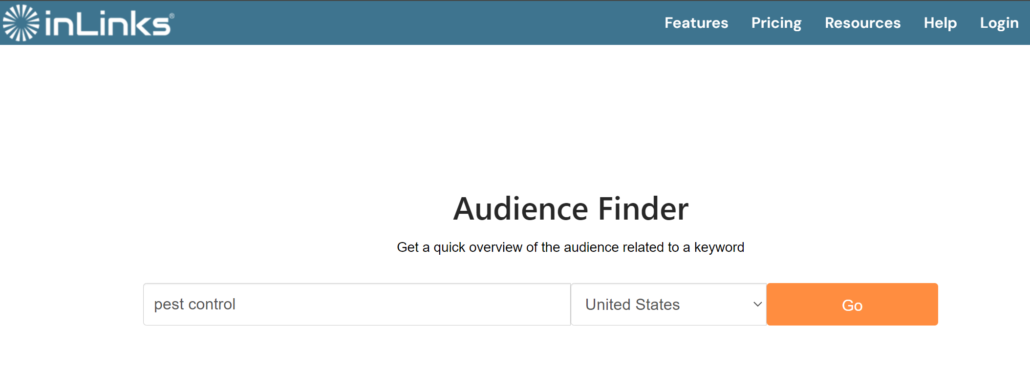To derive tangible results from search engine optimization, attracting traffic to your website is not enough.
You need to focus your marketing efforts on the right people—your target audience—so you can drive targeted traffic and increase conversions. But it all starts with knowing who the right people are and the problems they’re looking to solve. That way, you can reach them with the right content at the right time, build deeper connections, and ultimately drive meaningful results.
Let’s go over how to define your target audience for SEO to ensure you’re doing work that counts.
What is a Target Audience, and Why is it Important?
A target audience is the intended recipients of your marketing efforts. They are a group of people within your target market.
In SEO, this target audience is the individuals you’re looking to attract to your website because they’re interested in your content, services, or products. Also called ideal or purchasing audience, your target audience includes existing customers already using search engines to find your site.
Identifying this ideal audience, their motivations, and their needs is the foundation of your SEO work. Because no matter how powerful your content or message is, it won’t resonate or produce the desired results if it’s aimed at the wrong audience.
The methods and tools we’ve outlined in this post will help you find, analyze, and understand your target audience for SEO. With that understanding, you can create better SEO strategies, produce more impactful content, and drive ROI to support your efforts.
5 Ways to Find Your SEO Target Audience
1. Use InLinks Free Audience Finder Tool, to Identify Your Target Audience
If you know the keyword or search term you want your product or service to be known for, the InLinks Audience Finder tool on this page can show you all the possible target audiences for said term. It’ll use content ideas and related keywords to provide context about each audience so you can quickly decide on the right people to focus your marketing efforts.
This visualization will save you several hours of research and provide the clarity you need to understand your audience, dive into deeper keyword research, and plan your SEO content.
Let’s use a business providing pest control services in the US as an example to see how we can uncover their audience.
Open the InLinks Audience Finder tool, enter your keyword, select country, and hit GO.

In the Audience Overview tab, you’ll find a breakdown of all the audiences related to your keyword, including a description of why they may need pest control services. Just click on each audience card.

Beneath each description, you’ll find two content ideas to ignite your creativity and help you visualize the kind of content that’ll interest such an audience.
Down the page, you’ll find related keywords grouped into clusters with their volume and CPC value in case you plan on running ads. The numbers beside each keyword represent the target audience it is relevant to. Click on a keyword to view all the questions and keywords associated with that cluster.

Looking at this data, here are some key insights we can derive:
- A pest control business can target anyone from homeowners and renters to large healthcare facilities and resorts.
- The approach, content, and messaging for targeting each audience will differ as they’re all interested in different aspects of pest control.
- The majority of audiences are looking for ways to prevent or protect themselves from pest infestation before it even occurs.
This audience information can help your SEO in many ways. First, you can see and decide quickly the best audience to direct your product and service to. From there, you can dive into keyword research and start visualizing your content plan since you already know the content clusters to focus on and the kind of information your target audience is looking for. This data can also help you decide which competitors to look at when doing further research.
2. Gather Keyword Demographic Data
Once you have a target audience in mind and the queries they use, you can use tools like Google Trends and Demographics.io to find out the demographics associated with those keywords.
Google Trends will show you the geographic area where your keyword is most popular, while Demographics.io will reveal the demographic data of the people searching those keywords.
Continuing the pest control example, within the past year, most queries for pest control in the US have come from Alabama, thanks to the rain and year-round temperate weather.

However, it’s more women between the ages of 45-54 searching those queries.

This data can help you figure out more content ideas that will interest your audience. It can also inform your positioning, copywriting, and overall messaging on social media, your blog, and even paid advertising to ensure you’re communicating in a meaningful way.
3. Dig Into Data From Your Existing Audience
Data from existing web visitors and customers can provide insights into what your target audience finds appealing.
Naturally, web analytics tools like Google Analytics are the places to start looking for internal data in SEO. Google Analytics will show you a breakdown of your existing audience by country, city, interests, gender, language, and age. You’ll also see where this audience is coming from (social media, email campaigns, paid advertising, niche industry news sites, etc) and the terms leading them to your website.
Social media analytics can also help you understand your existing audience and learn about new ones. Look at things like location, activity level, age, gender, content, brands, influencers, and communities they engage with. All this data can clue you in on who your target audience is, help you identify trends that are unique to them, and direct your SEO efforts in the right direction.
Other internal data sources to also look at for understanding your audience are your customer relationship management (CRM) system and past campaigns.
4. Research Your Competitors Audience:
Since you often share similar audiences with your direct competitors, looking at who they’re focusing on can help define your own target audience.
In addition to their blogs and website, you should analyze their social audience, ads, and the influencers they work with. Look at demographics and psychographics information to get insights into the type of content their audience finds appealing. These topics may also interest your audience.
An audience research tool like Audiense will also help you here. You can use it to discover niche audiences and their demographics. The tool can even cluster audiences into segments and show the kind of content people are engaging with.
5. Run Surveys to Gather Audience Feedback:
Finally, one of the best ways to figure out your SEO target audience is to send out surveys. A short, simple survey focusing on basic demographics, pain points, needs, and overall interests can help you discover and analyze your audience at scale.
The data you get back will help you uncover content opportunities you’ve not considered before. This way, you can produce more impactful content that’ll drive targeted traffic and conversions.
Use Audience Research to Drive Better SEO Results
The best SEO campaigns are built on a solid understanding of your audience. After all, you’re doing SEO to promote your business to humans, not search engines. So, take the time to find your target audience and understand their needs, motivations, and interests so you can present your website and content in a way that resonates.
To save time and achieve results quickly, use InLinks to identify your target audience and get content ideas. Once you discover your audience, our keyword research tool will help you expand those keyword clusters so you can dive into creating your content plan and producing great optimized content.
| This post was researched and drafted by Juliet John and reviewed and edited by Dixon Jones. |





Leave a Reply
Want to join the discussion?Feel free to contribute!